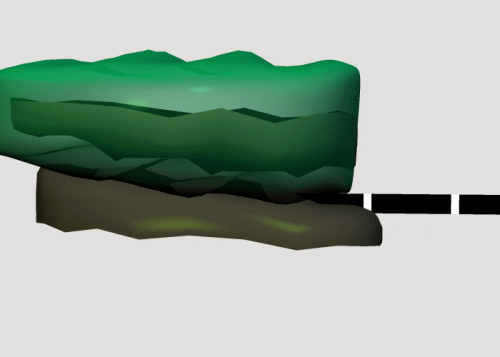Monday, May 31, 2021
Pretty good explanation, stupid explanation
Two studies that appear in RealClearScience today make a nice pair. Both deal with subjects I've wondered about and written about often. One seems plausible, the other is just stupid. One increases knowledge, the other subtracts.
This study offers an explanation of the electrical fields that precede an earthquake by days or weeks. The mechanism feels a little too complicated, but it does account for the delay. Seems to be based on electrolysis between two plates of different charge. Electrolysis moves bubbles, which effectively carry a current that creates the field.
This mechanism would seem simpler:
 A giant electret microphone. The upper plate is charged relative to the lower plate. As the upper plate slides, its serrated field moves across the serrated lower plate, repelling and attracting electrons at each small approach and retreat, and creating a complicated alternating current.
I discussed fields before quakes here.
= = = = =
This article tries to explain why we don't like the sound of our own voices. It misses ALL the points and facts.
A giant electret microphone. The upper plate is charged relative to the lower plate. As the upper plate slides, its serrated field moves across the serrated lower plate, repelling and attracting electrons at each small approach and retreat, and creating a complicated alternating current.
I discussed fields before quakes here.
= = = = =
This article tries to explain why we don't like the sound of our own voices. It misses ALL the points and facts.
 A giant electret microphone. The upper plate is charged relative to the lower plate. As the upper plate slides, its serrated field moves across the serrated lower plate, repelling and attracting electrons at each small approach and retreat, and creating a complicated alternating current.
I discussed fields before quakes here.
= = = = =
This article tries to explain why we don't like the sound of our own voices. It misses ALL the points and facts.
A giant electret microphone. The upper plate is charged relative to the lower plate. As the upper plate slides, its serrated field moves across the serrated lower plate, repelling and attracting electrons at each small approach and retreat, and creating a complicated alternating current.
I discussed fields before quakes here.
= = = = =
This article tries to explain why we don't like the sound of our own voices. It misses ALL the points and facts.
Hearing ourselves requires a second process. The sound has to go out through our skull as we produce it before it moves through the air and our ears. “When we then hear our own voice played back from a recording, that sound is then only filtered through air, just like other people's voices, and so it sounds different from when we hear ourselves while speaking,” Maslowski writes via email.No. We hear ourselves purely internally. The skull moves relative to the eardrum and also shakes the fluid in the cochlea, and we hear the 'inverse' result. The outside path doesn't matter. There's an added factor beyond the simple bone path. When we speak, the internal sound is so loud that several automatic dampers are turned on to protect the cochlea from destruction. The tensor tympani muscle pulls on the eardrum, limiting and DAMPING its movement. The stapedius muscle tenses up the stapes where it enters the cochlea, providing more damping. These protectors mainly lose high frequencies, so what we hear is bassy. THAT'S why the external recorded sound seems high. A smaller missed point:
In 1968, only 38 to 55 percent of people quizzed could identify the sound of their own voices. One of the rare exceptions were radio announcers, who got it 100 percent of the time. Similar surveys conducted in 2008 and 2010 found about 90 percent or more of people identified themselves.Before widespread use of cassette recorders and iphones, it wasn't just radio announcers who heard their own voice electronically from outside. Everyone who uses a regular landline phone hears their own voice echoing in the receiver. This version of our voice is ALSO bassy, since the landline cuts all freqs above 3000. Radio announcers heard an accurate version of their own voice in their monitor headphones. I've discussed the question here among other places.
